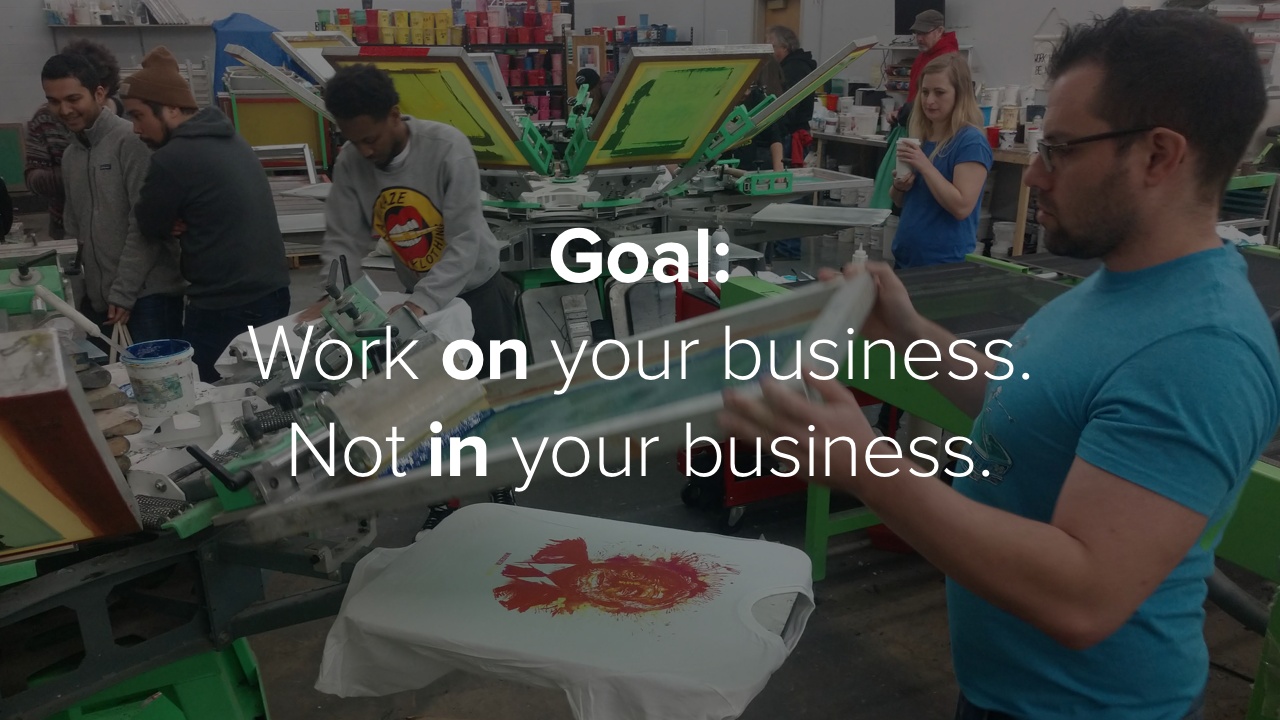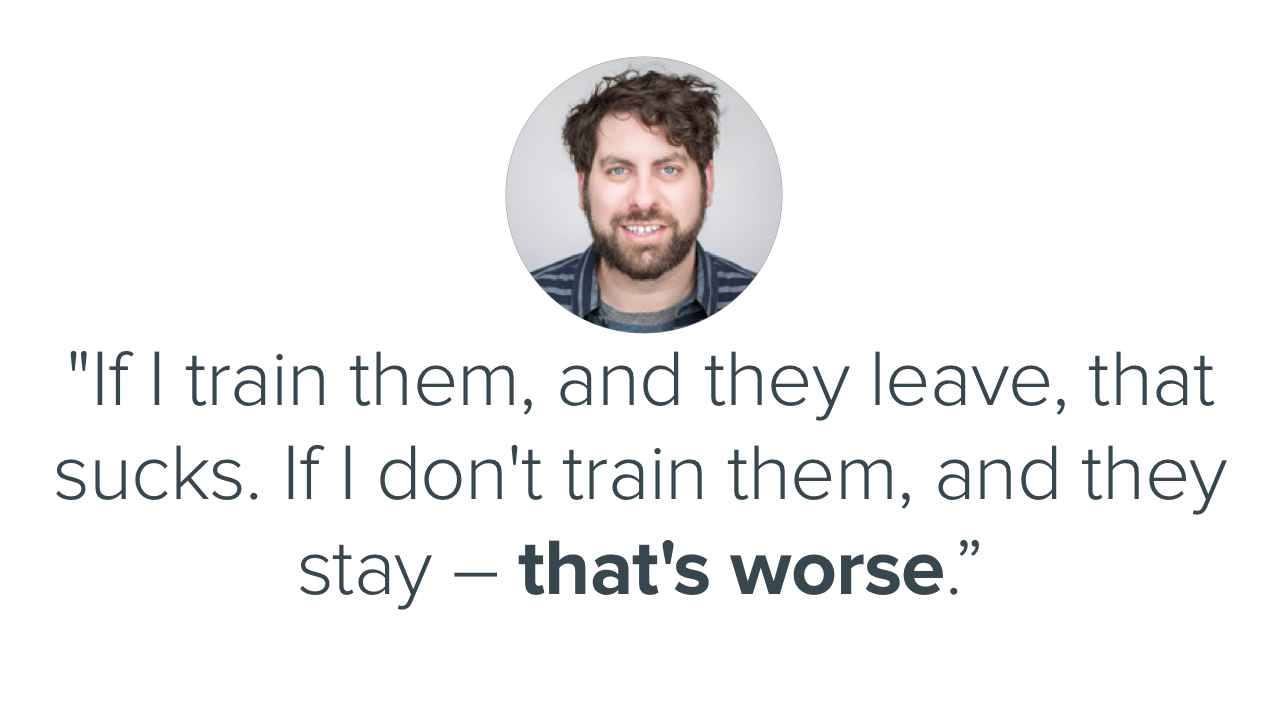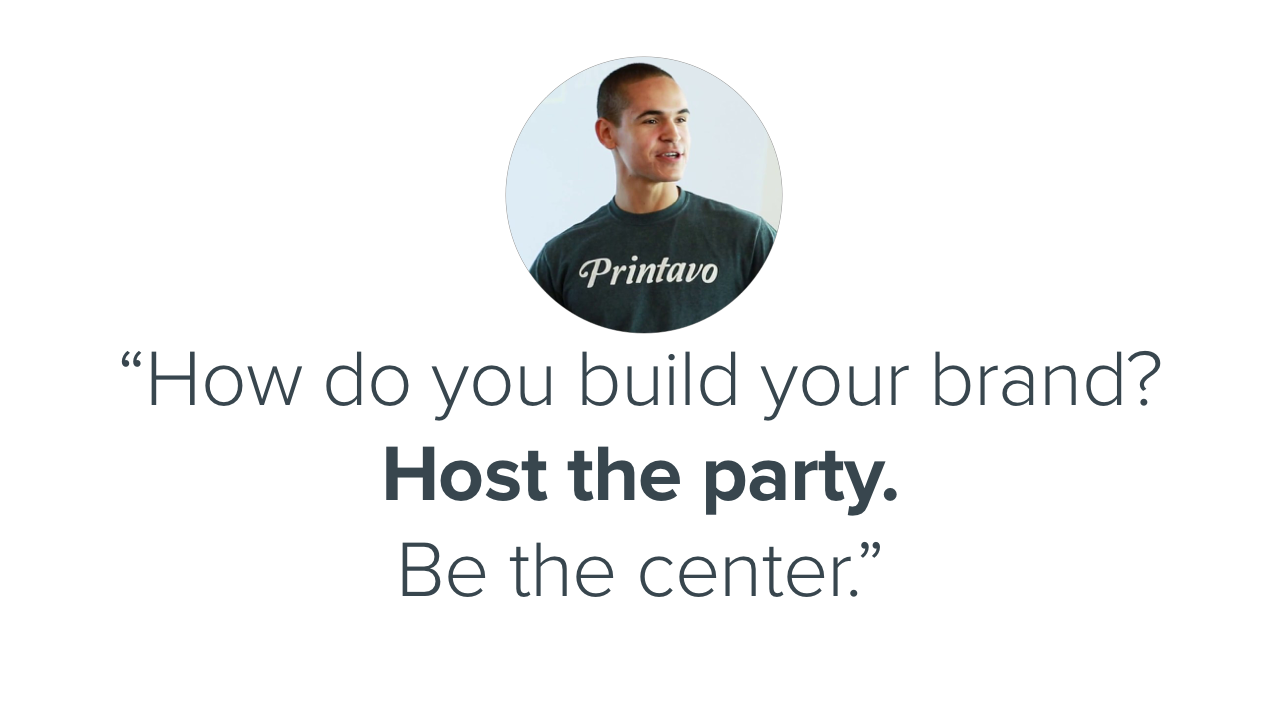At ISS Long Beach 2019, Steven Farag from Campus Ink and Bruce Ackerman from Printavo teamed up to give an in-depth seminar about simplifying your print shop’s workflow. This hour-long seminar offers actionable, achievable tips for how to examine and disrupt the processes that block shops from being maximally productive.
You can read a full recap and watch the entire hour-long workshop below!
Managing your screen printing shop’s workflow is a real challenge. Printavo started because of the need for a way to manage the complicated print shop workflow. This is our bread-and-butter – process and workflow are the key to success in any business, but particularly in a manufacturing environment like garment decorators face.
“Unless I decided to stop what I was doing and actually work on the business instead of in the business, I wasn’t going to be able to scale it.” – Steven Farag on his initial days at Campus Ink
Let’s show you the ten ways to start improving and simplifying your shop’s workflow.
1. Document your workflow
“Focus on creating a repeatable process…so you don’t have to be there.”
The difference between a billion-dollar corporation and a hot dog stand is concern about process. Physically write down your workflow. You can use a tool like Draw.io or Confluence to help you with this, or just use pen-and-paper.
Sounds simple, right? But this exercise is tremendously valuable. Take a job from intake all the way to follow-up with the customer. Which steps are there?
Your workflow is not set in stone. It’s your playbook for your team to execute on. Your workflow is going to change, and that’s what you want.
2. Consider your organizational structure
Can you take a vacation? If not, consider how you could organize your business so you could – without shutting down your shop.
Focusing on organizational structure means focusing on your people and how they interact with your business. This is one powerful aspect of culture in your business. Your employee handbook can be your central document for how your business interacts with its employees. You can lay out:
- Expectations
- Steps to take to improve
- Acceptable and unacceptable models for communication and problem solving
- What to do in common situations
- How departments interact
Steven Farag recounts a scene from The Founder, a film about McDonald’s founder Ray Kroc. Great pains were taken during the early days of McDonalds to detail, document and specify every single controllable aspect of the employee routine at McDonalds – even going so far as to create “boundaries” for employees with masking tape on the floor – so they’d consistently be in the right place.
This repeatability and relentless documentation played a big role in the early success of McDonalds. Kroc could easily ship his model business anywhere and replicate what he’d already built at another restaurant.
It may seem a little bit cheesy to hold a staff meeting if there’s only two or three of you. But in the long term, this lets you catch mistakes and build repeatable models for success. Success can catch you off guard if you’re not thinking with scalability in mind – and the key to scaling is structure.
Practice compartmentalizing and organizing tasks so that they’re repeatable and can happen with very little input or oversight.
3. Optimize production
Product, product, product. We are decorators, and we are only as good as our product. Whatever you’re printing has to be beautifully completed, each and every single time.
“I’m not worried about these huge companies like Custom Ink. They don’t control their quality. That’s one thing we can do: control and optimize our product.” – Steven Farag on optimizing what you can control.
Start with basic optimizations like reducing the number of steps that employees take while they print. Is your screen room too far from your washout booth? Do employees have to walk across your entire floor just to move a job forward? Eliminate the waste!
From there, move toward Standard Operating Procedures. Then, document everything so you can learn from each success and try to mitigate any mistakes in the future. Even a simple step like taking pictures of each and every job can deliver big improvements over time!
Steven suggests following someone like Charlie Taublieb for more advice on how to optimize your production habits.
4. Simplify hiring and training
As you get busier and busier with your business, you’ll struggle to value your time properly. But make no mistakes – training your employees correctly is extremely valuable. It is a real investment in your business and a worthwhile expenditure of your prized time. Empower your employees by investing in their success.
How do you simplify this process?
Start building a real structure for training and hiring your workers. This doesn’t have to be complicated! Build a simple-yet-detailed schedule for your new hires.
If you’re hiring a salesperson, show them success by taking them through some easy sales. If you’re hiring a printer, show them success through great images of your best prints and pointing out some of the awesome clients you’ve printed for. If you’re hiring an office worker, show them success by taking them through the printing process so they understand their role in it.
At Printavo, we’ve created a 5-day intensive “New Hire Schedule” that teaches our newest employees the ins-and-outs of the company. It’s a 30,000 ft. overview of Printavo’s values, our industry, our tools, common processes – with plenty of specifics and details. Be sure to go deeper than the nuts-and-bolts of their tasks – this is your first chance to create a genuine emotional connection with your employees by showing the “why” around your company.
What problem do you solve? Why do you exist? Why should this new employee be passionate about their new job? Don’t leave these things for employees to figure out on their own!
5. Automate your marketing
Marketing is ridiculously time consuming. It takes on many forms, in many channels, and can be a huge task to keep up with. Luckily, there are literally thousands of tools to help you automate your marketing efforts.
But first – start with your brand. Yes, it seems generic…but you really do need to consider how your brand looks and feels before you begin pushing forward with automated marketing. Once you’ve standardized your brand’s voice and role in your community, you can dramatically scale up your efforts.
You can go big with an all-inclusive CRM like HubSpot or SalesForce, but those are often prohibitively expensive for a fledgling print shop. So get creative. Start taking stock of the awesome productivity tools you can leverage to automate email, social media posting, advertising, and reviews.
- Buffer lets you plan and post social media content automatically from a single platform
- ReviewerPro makes managing online reviews much easier
- MailChimp and Intercom can streamline your email marketing efforts
- AdRoll makes retargeted advertising affordable and automatic
So how do you make content for social media and marketing? Start documenting your process. Act like you’re creating a long term document of your business. This takes the pressure off of you – and leverages the fact that people really love to see how things are printed.
6. Simplify customer service
Speed and consistency are the keys to success. In customer service, the faster and more consistent you are with every customer interaction, the better. This is how brands like Amazon and Apple have mastered their businesses: customers know they’ll get fast service and know exactly what kind of service they can expect.
Amazon prides itself on unparalleled service and “frictionless” interaction. Apple Stores are built on personable, friendly interaction that’s more like a helpful partnership than sales. In both cases, customers have a great deal of clarity around what they can expect. How did these brands do it? They simplified and standardized virtually everything that’s customer-facing.
Document everything that happens between your shop and customers. At Printavo, ZenDesk helps keep track of everything. It provides metrics to measure our core competency: speed and consistency.

We use a practice called T.A.R. to guide every interaction with customers. This dramatically simplifies the process. Customer care representatives aren’t forced to be creative – they simply follow a simple pattern that structures every conversation they have.
- Thanks. We thank every customer for their inquiry, no matter how negative or positive it is.
- Acknowledge. We acknowledge the issue. At its essence, this means repeating what the customer told you back to them. The goal is to make the customer feel seen and heard.
- Resolve. We offer concrete next steps for resolving their issue. If we can’t resolve the issue, we let them know that we are working on a solution and offer a definite timeline for its resolution. If it’s a long term or complex problem that we can’t resolve, we set a time and place for checking back in on the issue.
Steven relays that scripts are tremendously valuable for dealing with customers. So don’t be afraid to write a detailed script for employees to start with. You’ll be surprised to find how helpful a few concrete phrases and “moves” to make with customers really is for your employees.
7. KPIs and accounting
Accounting is something most shop owners hate. Whether you’re doing cash accounting or accrual accounting, have someone that you trust and can call on when you need help – because come tax time, the government doesn’t give discounts for disorganization. But it’s important
Start taking stock of the key performance indicators you intend to track and maintain in your business. These are how you define success in your shop, and they’re crucial to structuring and simplifying your efforts as business owner.
Here’s a few to start with:
- Cost per impression. This one is extremely difficult to nail down (even with Steven’s math and science background, he found there were too many variables to get a truly accurate number).
- COGS. Cost of goods sold. How much you’re spending on blank goods combined with the direct labor costs to produce your goods. Steven compares his COGS to his monthly revenue and shoots for a monthly target percentage. It’s a “temperature gauge for evaluating your pricing.”
- Revenue per hour. Much like a mechanic charges per hour of labor, your shop probably has an “hourly rate” that you should be aiming for. If you know the revenue per hour, you can start estimating the real price you should charge customers for “occupying” your shop.
- Average job size. How much does your “average” job pay? This can help with production and sales – and can be a metric for your salespeople to focus their efforts on.
8. Consistent communication
Does your shop have a dictionary built around a common vocabulary? Standard language simplifies communication. This is the same concept that Simplified Technical English uses for complex aviation manuals.
You don’t want to stop at standardizing the language you use for production. You also want to standardize how you talk to customers about their jobs. This can be a standard intake form, standard phrases, and clear terms that aren’t industry jargon.
The less your team has to communicate about the details of a job, the faster they can print it. The clearer your standard vocabulary, the more rigorous your process becomes.
9. Iteration: innovation and evolution
You have to go back and continually iterate to improve your process. There is just no way you will get this right the first time, the second time, the third time – even the hundredth time – because there is no “end” to this task. This is the well-known practice of kaizen – a process of ongoing learning and improvement.
If you’re not familiar with the Toyota Production System, now’s the time to start learning about the valuable insight Toyota’s principles have brought to manufacturing. Utilizing similar principles is how to not only become leaner – but how to actively innovate and evolve.
How do you do this?
- Have one-on-one meetings with team members. These recurring, bi-weekly, 10-to-15 minute meetings build relationships and create a culture of honest exchange.
- Get detailed about successful jobs. Dig down into jobs that went well and discover what made them successful.
- Root out problems. Give employees an opportunity to talk candidly about problems they’re having – even in their personal lives. They are, after all, spending most of their time in your business.
- Use visual control. If you can visually depict your processes and workflows, you can almost always identify possible failure points. This could take the form of your Printavo calendar, a Kanban board, or any number of highly visual ways to show what’s happening.
- Never stagnate. Don’t get complacent. There’s always something to improve.
- Make mistakes an opportunity for growth. Instead of dwelling on errors, identify how you can turn problems into solutions. You can’t fix that botched job, but you can prevent the exact same mistake from happening again.
“Mistakes happen every single day. Misprints. Spelling errors. You’ve all seen them. We have this motto: mistakes happen because of ignorance or ineptitude. Either the system is broken, or the people don’t know how to use your system. It’s probably your fault. But these are teachable moments, not moments of reprimand.” – Steven Farag on how to course correct
10. Extreme optimism
The bottom line is the extreme optimism that guides you through the ups-and-downs and keeps you focused on the long term vision you have. Hold yourself to a higher standard to start creating something that can scale and grow.
In dozens of conversations with shop owners from all around the world, we’ve found that extreme optimism is what separates the people who succeed from the people who fizzle out. Each job is one step closer to your goal. It’s up to you, however, to define that goal.
Steven recommends The E-Myth Revisited if you’re struggling for a way to start staying truly optimistic. It’s the entrepreneurial mindset. Even if you’re not a super “happy-go-lucky” person, your optimistic mindset and positive outlook can shine through. That long term consistency and “almost delusional” optimism – coupled with a real passion for improvement – is what can keep you going for 5, 10, 25 years and beyond.








0 Comments